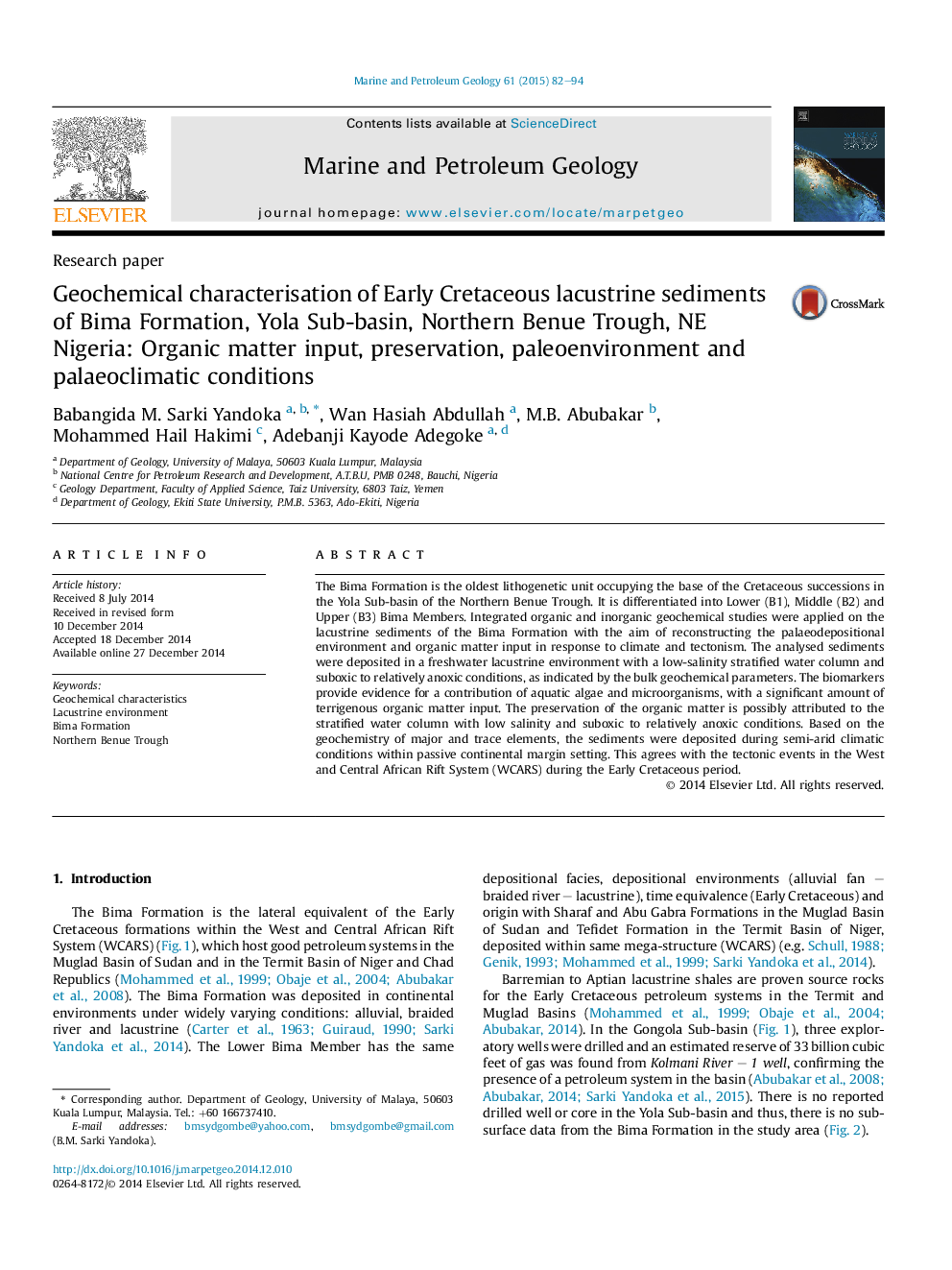| کد مقاله | کد نشریه | سال انتشار | مقاله انگلیسی | نسخه تمام متن |
|---|---|---|---|---|
| 6435188 | 1637164 | 2015 | 13 صفحه PDF | دانلود رایگان |
- Biomarkers provide evidence for lacustrine environment with aquatic algae and significant terrigenous inputs.
- The organic matter was preserved under low salinity and suboxic to relatively anoxic conditions.
- Preservation of organic matter could be attributed to stratified water column and low salinity.
- The lacustrine sediments were deposited during the semi-arid palaeoclimatic conditions in passive continental setting.
The Bima Formation is the oldest lithogenetic unit occupying the base of the Cretaceous successions in the Yola Sub-basin of the Northern Benue Trough. It is differentiated into Lower (B1), Middle (B2) and Upper (B3) Bima Members. Integrated organic and inorganic geochemical studies were applied on the lacustrine sediments of the Bima Formation with the aim of reconstructing the palaeodepositional environment and organic matter input in response to climate and tectonism. The analysed sediments were deposited in a freshwater lacustrine environment with a low-salinity stratified water column and suboxic to relatively anoxic conditions, as indicated by the bulk geochemical parameters. The biomarkers provide evidence for a contribution of aquatic algae and microorganisms, with a significant amount of terrigenous organic matter input. The preservation of the organic matter is possibly attributed to the stratified water column with low salinity and suboxic to relatively anoxic conditions. Based on the geochemistry of major and trace elements, the sediments were deposited during semi-arid climatic conditions within passive continental margin setting. This agrees with the tectonic events in the West and Central African Rift System (WCARS) during the Early Cretaceous period.
Journal: Marine and Petroleum Geology - Volume 61, March 2015, Pages 82-94
